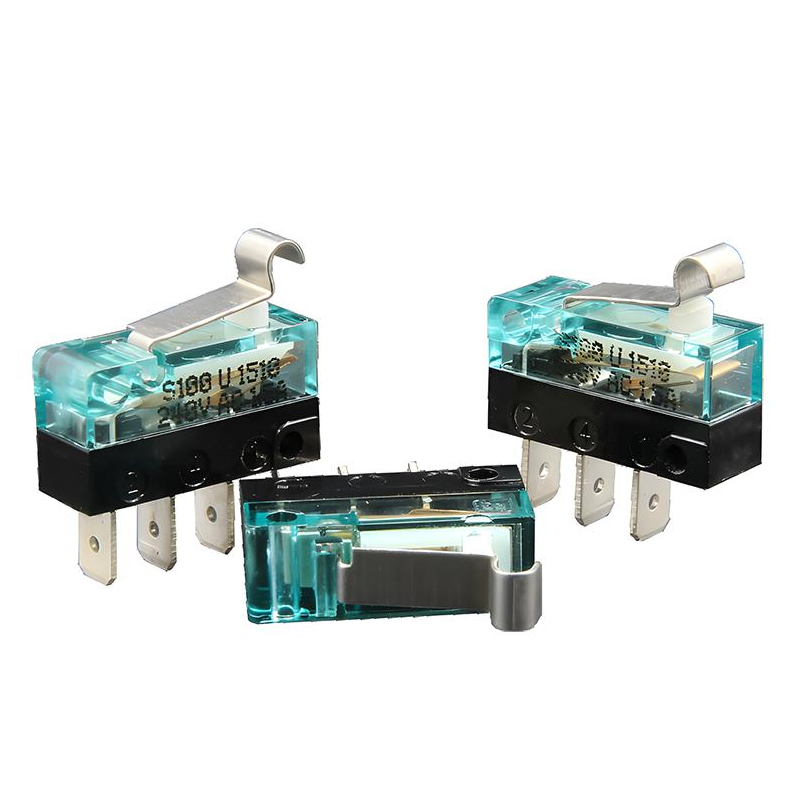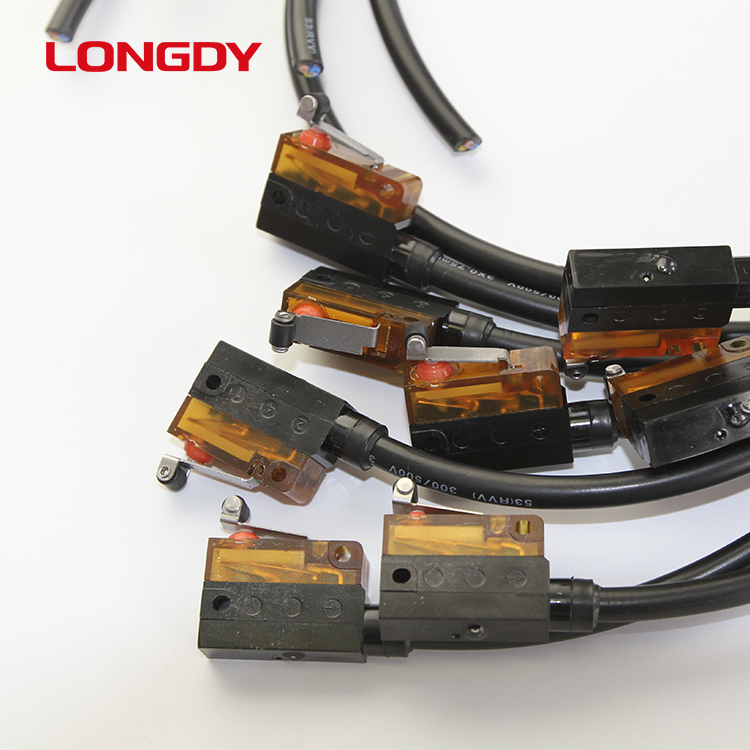

What are the factors associated with microswitch life?
Release time:2024-08-30
This has always been a major concern for engineers and equipment designers. Microswitches, as indispensable small components in modern electronic equipment, the stability and reliability of their performance are directly related to the performance and life of the entire equipment. Therefore, understanding the factors that affect the life of microswitches is crucial to improving the overall quality of the equipment.
First of all, the frequency of use is one of the most important factors affecting the life of microswitches. Like human joints, frequent use accelerates wear and tear. In the lab, engineers simulate prolonged use through high-speed switch testing to observe whether switches maintain good electrical performance after tens of thousands or even millions of presses.

Second, the operating environment also has a significant impact on the life of microswitches. High temperatures, high humidity or environments containing corrosive gases can erode switch materials and affect their performance. Environmental testing ensures that the microswitch will operate stably under all kinds of extreme conditions.
Furthermore, current loading is another important consideration. Microswitches may overheat or even burn out when subjected to excessive current. A current overload test assesses the current range in which the switch can safely operate.
Finally, the quality of manufacturing is critical in determining the life of a microswitch. A high quality manufacturing process ensures that each switch meets high standards in material selection, structural design, and assembly. This is usually achieved through a series of sophisticated quality control processes, including material testing, dimensional measurement and functional testing.

In addition to the factors mentioned above, there are also mechanical microswitch defects that require attention. For example, the reeds within mechanical microswitches can become fatigued from frequent use, leading to false clicks or malfunctions. Optical microswitches, on the other hand, detect whether a key is pressed or not by using light instead of physical contact, thus avoiding the wear and tear problems associated with physical contact and providing a longer lifespan and faster response time.
In summary, the lifespan of a microswitch is affected by a variety of factors, including frequency of use, operating environment, current load, and manufacturing quality. Through in-depth understanding and reasonable control of these factors, the service life of microswitches can be effectively extended, thereby enhancing the stability and reliability of electronic equipment. When selecting microswitches, their working environment and application requirements should be taken into account to choose the right type and quality of switch to ensure the long-term stable operation of the equipment.
First of all, the frequency of use is one of the most important factors affecting the life of microswitches. Like human joints, frequent use accelerates wear and tear. In the lab, engineers simulate prolonged use through high-speed switch testing to observe whether switches maintain good electrical performance after tens of thousands or even millions of presses.

Second, the operating environment also has a significant impact on the life of microswitches. High temperatures, high humidity or environments containing corrosive gases can erode switch materials and affect their performance. Environmental testing ensures that the microswitch will operate stably under all kinds of extreme conditions.
Furthermore, current loading is another important consideration. Microswitches may overheat or even burn out when subjected to excessive current. A current overload test assesses the current range in which the switch can safely operate.
Finally, the quality of manufacturing is critical in determining the life of a microswitch. A high quality manufacturing process ensures that each switch meets high standards in material selection, structural design, and assembly. This is usually achieved through a series of sophisticated quality control processes, including material testing, dimensional measurement and functional testing.

In addition to the factors mentioned above, there are also mechanical microswitch defects that require attention. For example, the reeds within mechanical microswitches can become fatigued from frequent use, leading to false clicks or malfunctions. Optical microswitches, on the other hand, detect whether a key is pressed or not by using light instead of physical contact, thus avoiding the wear and tear problems associated with physical contact and providing a longer lifespan and faster response time.
In summary, the lifespan of a microswitch is affected by a variety of factors, including frequency of use, operating environment, current load, and manufacturing quality. Through in-depth understanding and reasonable control of these factors, the service life of microswitches can be effectively extended, thereby enhancing the stability and reliability of electronic equipment. When selecting microswitches, their working environment and application requirements should be taken into account to choose the right type and quality of switch to ensure the long-term stable operation of the equipment.
